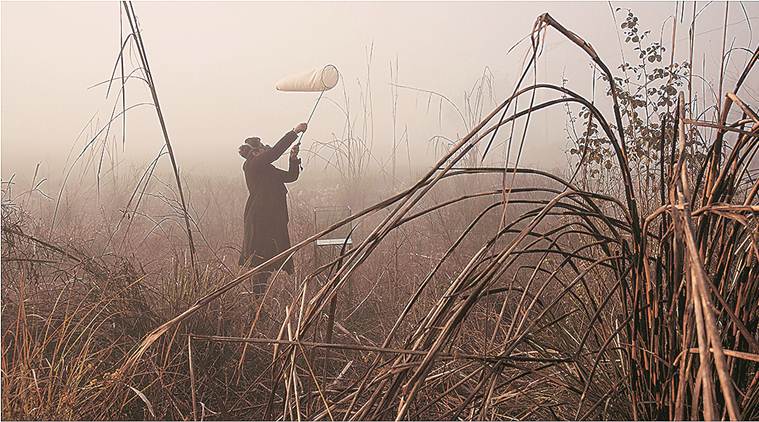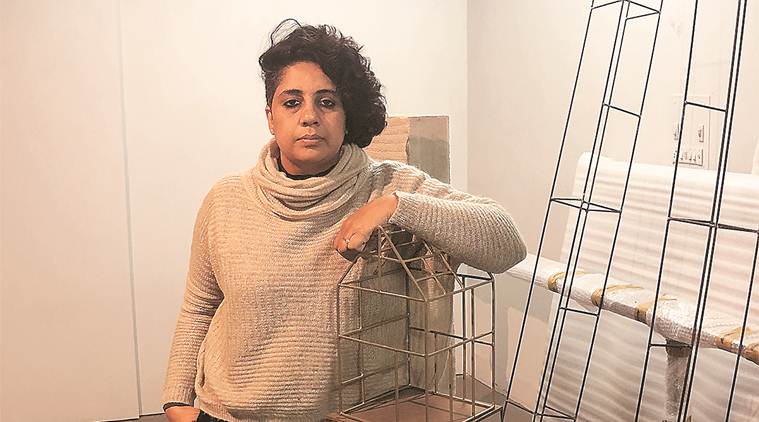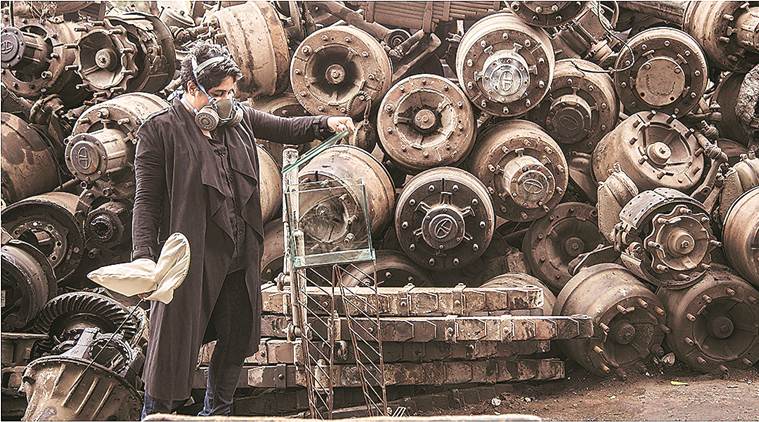Updated: January 26, 2019 3:00:17 am
How green was my valley
Through her exhibition, artist Vibha Galhotra urges viewers to engage with the environment

The exhibition “Climacteric” is the first solo of Vibha Galhotra in her hometown, Chandigarh. It comprises photographs, films, videos, sculptures and found material presented in the context of the environment, and through the showcase the conceptual artist hopes to share her concerns regarding the possibly irreversible damage to the environment because of human activity. She forces the viewers to question their own role and level of engagement with the social, economic, political and ethical implications of climate change.
Showcased in Chandigarh through the efforts of the Punjab Lalit Kala Akademi, the show has Galhotra refer to several specifics, including the effluvial sludge clogging up the Yamuna river. She urges the audience to inquire about living in the age of the Anthropocene. The latter is characteristic of “the great climacteric”, referring to a period of critical transition, in this case ecological. “It is our constant effort to bring to Chandigarh and the region, the artistic voices of our times and give people, importantly students, a chance to feel and appreciate the varied idioms and layers of art, and this show is special in this context,” says Diwan Manna, Chairperson of the Akademi.

Galhotra’s understanding of the environment comes from her own childhood experiences of suffering from breathing issues and the resulting isolation which led her to form what she calls “friendships” with plants, who she called her “mates”. Her memories include a childhood spent admiring nature. It was a time when the Yamuna was still a clean river and she would plan family excursions on the banks. Now the river has turned into a sewage and to Galhotra it seems the black river is mourning. Her own memories of the lush green landscapes informed her artistic practice, which she says is also a way of taking responsibility for what all of us have done to our rivers, land and air. As a witness to the degradation, Galhotra looks at the many issues that are interlinked with the innocence of a child who has lost the world of her past, the grown up who is ridden by anxiety to see the river of her childhood dying, and as an artist who believes art has a social responsibility.
The exhibition comprises works from different series. According to Galhotra, both art and the artist cannot be exclusive of the existent socio-political-economic environment. “Over the last few years, I have been increasingly drawn towards the ideal of societal evolution. Through my practice, therefore, I have been constantly researching and questioning the development of the world I inhabit, whether that be progressive or detrimental. My works, then, are a reflection of things and issues that concern me, including, in a larger realm, the sense of ownership, inequality, migration, human supremacy, individual and societal phobias and myths.” says Galhotra, who studied at the Government College of Art, Chandigarh, and at Santiniketan.

Galhotra has transformed the gallery into an immersive space, featuring familiar and unanticipated elements, ranging from the Panchabhuta (earth, water, fire, air and ether) to aesthetic representations of anthropogenic climate patterns. A film juxtaposes the beliefs and reality of the scared Yamuna river, introducing audiences to an aestheticised toxicity that makes them curious but leaves them unsettled.
Drawing from her experiences of living in a culturally diverse country racing towards being developed, Galhotra became interested in the subject of Anthropocene. The constant negotiation of humans with the ecosystem and with the mysteries within that ecosystem interest her to continue her practice based on research and intuitive imagination. She wants to understand and question the alienation of humans in the atmosphere as also the atmosphere in the human-dominated world.






















No hay comentarios:
Publicar un comentario